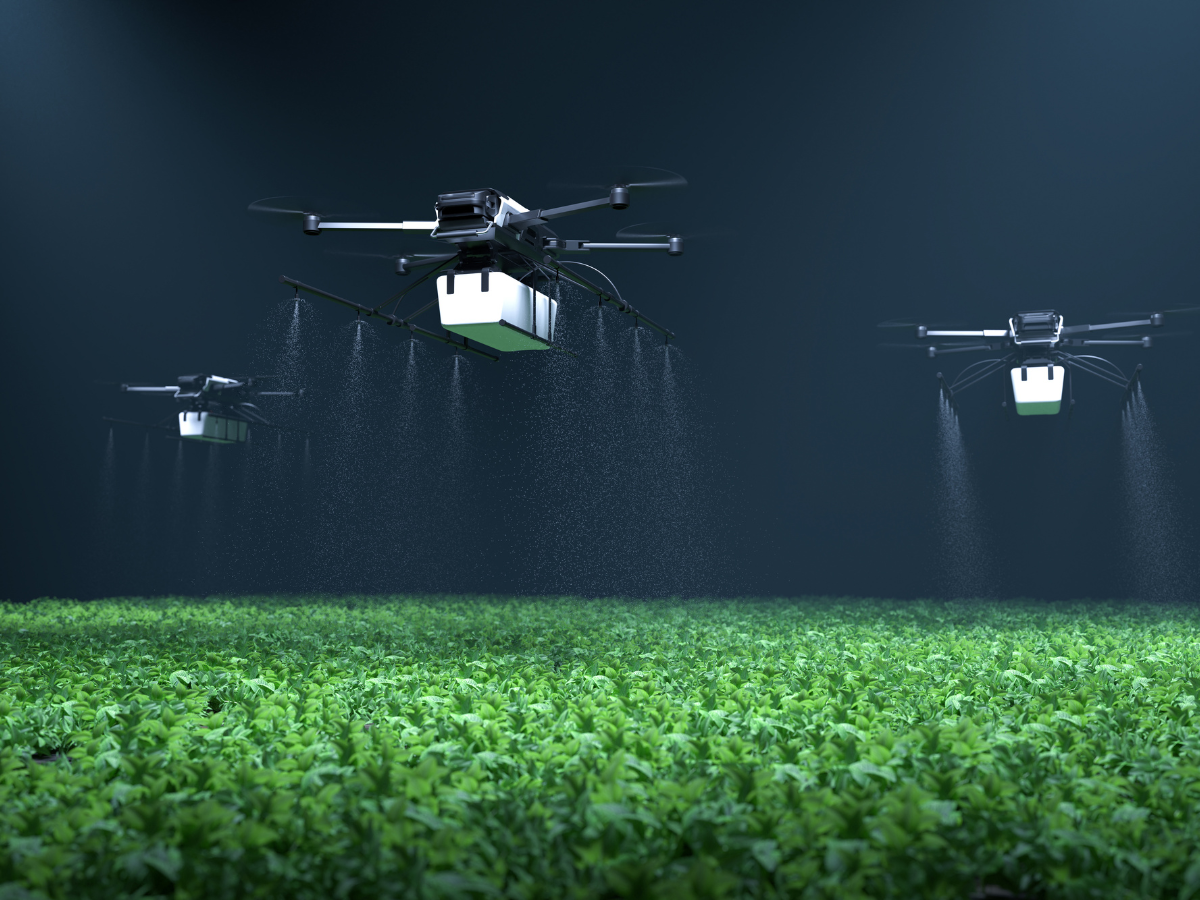Drone Farming: Revolutionizing Agriculture with Precision

Drone farming, also known as precision agriculture or aerial farming, leverages drone technology to enhance various agricultural practices. This innovation provides farmers with advanced tools for monitoring crops, managing resources, and improving yields, all while promoting sustainability.
Key Benefits
Enhanced Crop Monitoring
Drones equipped with high-resolution cameras and multispectral sensors offer detailed aerial views of crops. This allows farmers to monitor plant health, identify diseases, and detect pest infestations with high precision. By capturing data at various stages of crop growth, drones help in making informed decisions and implementing timely interventions.
Efficient Resource Management
Drones facilitate efficient management of water, fertilizers, and pesticides. By using advanced imaging technologies, drones can create detailed maps of fields, highlighting areas that need more or less treatment. This precision reduces waste and ensures that resources are used only where needed, promoting both cost savings and environmental sustainability.
Improved Yield Prediction
The data collected by drones can be analyzed to predict crop yields more accurately. This forecasting helps in planning and managing the supply chain more effectively, ensuring that resources and labor are allocated efficiently. Accurate yield predictions also support better market planning and financial forecasting.
Faster Data Collection
Traditional crop monitoring methods can be time-consuming and labor-intensive. Drones streamline this process by quickly collecting vast amounts of data from large areas. This speed allows farmers to respond rapidly to emerging issues, such as pest outbreaks or nutrient deficiencies, thereby minimizing potential damage.
Precision Application
Drones can be used for precision spraying of fertilizers, pesticides, and herbicides. This targeted approach reduces the amount of chemicals used, minimizing environmental impact and reducing costs. Additionally, drones can reach areas that might be difficult for traditional equipment to access, ensuring more comprehensive coverage.
Challenges and Considerations
Regulatory Compliance
Drone operations are subject to regulatory requirements, which can vary by region. Farmers must ensure they comply with local aviation and agricultural regulations, including restrictions on drone flight zones and usage.
Technical Expertise
Effective use of drones requires a certain level of technical skill and knowledge. Farmers may need training to operate drones and interpret the data collected. Investing in this training is crucial for maximizing the benefits of drone technology.
Initial Investment
The initial cost of purchasing and setting up drone equipment can be substantial. However, the long-term benefits, including increased efficiency and yield, often outweigh the initial investment. Additionally, advances in technology may lead to more affordable options in the future.
Future Prospects
The future of drone farming is promising, with ongoing advancements in technology likely to further enhance its capabilities. Innovations such as AI-driven analytics, improved battery life, and enhanced sensors are expected to drive even greater efficiencies and accuracy in agricultural practices.
Drone farming represents a significant leap forward in agricultural technology, offering numerous benefits from enhanced monitoring and resource management to improved yield predictions and precision application. As the technology continues to evolve, it holds the potential to revolutionize farming practices, making agriculture more efficient, sustainable, and productive. For companies and farmers willing to embrace this innovation, the future of agriculture looks bright.






